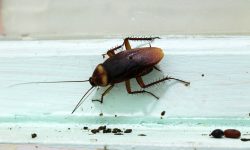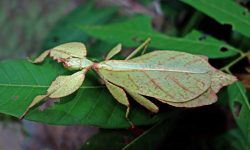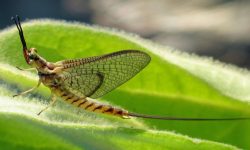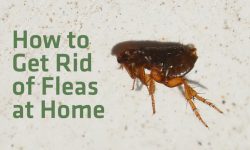Woodpeckers may be fascinating birds, but their relentless pecking can cause serious damage to your property. Whether they are drilling into your home for food, nesting, or marking their territory, getting rid of woodpeckers can be a challenge. Here are 20 effective tips to keep these persistent birds away from your yard.
Different Methods to Get Rid of Woodpeckers
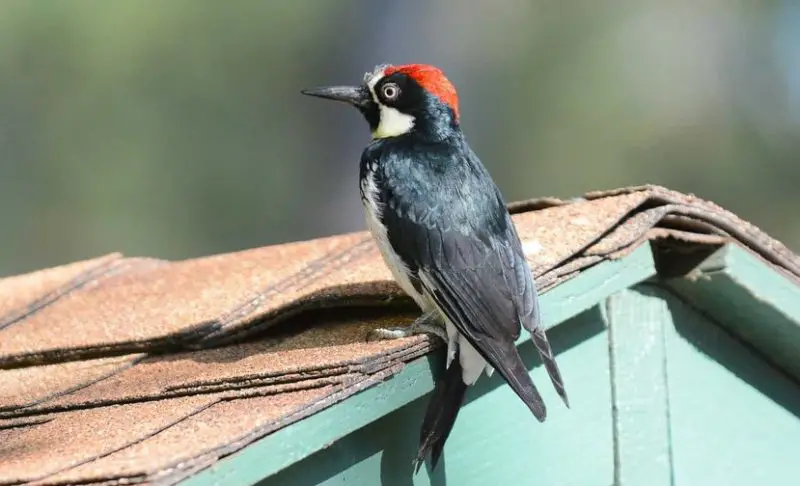
Remove the Food Source
Woodpeckers are often drawn to houses because they detect insects living within the walls, which serve as a primary food source. Common pests that attract woodpeckers include ants, termites, and bees.
To determine if insects are the cause of the woodpecker activity, carefully inspect your home for small, deep holes, especially those arranged in a linear pattern, as these may indicate that the birds are foraging for insects. Additionally, look for other signs of infestation, such as visible ant trails, beehives near the structure, or areas of wood damage caused by termites.
If an infestation is present, take action by using targeted insecticides to eliminate the pests. For severe cases, contacting a professional exterminator is recommended to ensure the infestation is fully eradicated, preventing further woodpecker damage to your home.
Use a Decoy Woodpecker Feeder
A decoy feeder can help redirect woodpeckers away from your house by providing an alternative food source. Hang a suet feeder filled with suet cakes made of animal fat, seeds, and fruits, which are highly attractive to woodpeckers.
For best results, choose a sturdy metal feeder with a tail prop, as this design offers better support and comfort for the birds. Position the feeder at a distance from your home, preferably near trees or wooded areas, to encourage woodpeckers to settle and feed away from your property.
Use a Woodpecker Sound Deterrent
Loud or unexpected noises can effectively scare woodpeckers away from your home. Simple actions like clapping your hands or playing loud music when you spot a woodpecker can startle them and discourage further visits.
For a more consistent solution, consider using an electronic deterrent that emits predator sounds or distress calls to create a threatening environment. Some advanced devices even produce high-frequency sounds that are inaudible to humans but disruptive to birds, helping to keep woodpeckers away without disturbing your household.
Install a Decoy Woodpecker Predator
Woodpeckers tend to avoid areas where they sense potential predators. Placing a life-sized rotating owl decoy near the affected areas can create the illusion of danger and deter them from returning.
For added effectiveness, consider using a moving coyote cutout in nearby bushes to further simulate a predator’s presence. To prevent woodpeckers from recognizing the decoy as fake, regularly change its position and location to maintain the illusion of a real threat.
Plant Strategic Fruit Trees and Berry Bushes
Providing an alternative food source can help divert woodpeckers away from your home. Planting fruit-bearing trees and berry bushes at the edge of your property gives them a natural feeding area, reducing their interest in your house.
Choose plants that produce food year-round, such as mulberries, elderberries, or serviceberries, to keep woodpeckers occupied throughout the seasons. However, avoid planting these trees too close to your home, as they may attract birds back toward your property instead of keeping them at a distance.
Install a Woodpecker Net
Bird netting is an effective way to create a physical barrier that prevents woodpeckers from reaching your home’s surface. To maximize protection, use durable netting positioned at least three inches away from the exterior walls to prevent birds from pecking through it.
Choose rot-proof and UV-resistant netting to ensure long-lasting durability. Regularly inspect the netting for tears and remove any trapped debris to maintain its effectiveness and keep your home woodpecker-free.
Remove Roosting Areas
Woodpeckers are more likely to stay around if they find comfortable perching spots near your home. To discourage them, install bird spikes on eaves, fences, and ledges to make these areas less inviting.
Another effective method is applying anti-bird gel, which creates a sticky and unpleasant surface that deters birds from landing. Regularly inspect your home for potential roosting spots and take preventive measures to keep woodpeckers from settling in.
Scare Woodpeckers with Reflection
Shiny objects can effectively deter woodpeckers by creating unpredictable light reflections that make them uncomfortable. Hanging old CDs, aluminum foil strips, or small mirrors near affected areas can discourage birds from settling.
For added effectiveness, use reflective tape that crinkles in the wind, combining both visual and noise deterrents. Installing reflective pinwheels or balloons can also serve as an aesthetic yet functional way to keep woodpeckers away from your home.
Use Bright Mylar Balloons
Large, bright balloons can startle woodpeckers and make them wary of the area. For best results, choose Mylar balloons with predator eye designs, which mimic the appearance of natural threats.
Hang the balloons near problem areas and move them periodically to prevent woodpeckers from getting used to them. For maximum effectiveness, combine this method with other deterrents, such as reflective objects or sound-based repellents.
Find and Fill Up Holes in Your House
Sealing potential nesting spots can help prevent woodpeckers from returning to your home. Inspect your exterior walls for holes and fill them using wood putty, foam, or copper mesh to block access.
Once the holes are filled, sand and paint over the area to blend it with your home’s surface, making it less attractive to birds. Regularly check for new holes and repair them immediately to stop woodpeckers from establishing a nesting site.
Wrap the Trees
Protecting trees can help prevent woodpecker damage by creating a physical barrier. Wrap tree trunks with synthetic burlap or mesh to discourage birds from pecking and foraging.
Regularly inspect trees for signs of decay, as rotting wood attracts insects, which in turn draw woodpeckers. Use weather-resistant materials to ensure long-lasting protection with minimal maintenance.
Remove Trees Near the House
Woodpeckers are more likely to nest in areas with nearby food sources and cover. Trimming tree branches that hang close to your home can make your property less inviting to them.
If woodpeckers continue to be a problem, consider removing large trees near your house, especially if they provide easy access to your walls. To maintain greenery while deterring birds, replace tall trees with low-lying shrubs and ornamental plants that do not attract woodpeckers.
Add Movement to Deter Woodpeckers
Motion-based deterrents can make woodpeckers feel uneasy and discourage them from staying near your home. Installing wind chimes, wind vanes, or spinning garden decorations creates constant movement that disrupts their sense of security.
For targeted protection, hang moving streamers or windsocks in problem areas to create unpredictable motion. DIY deterrents made from reflective materials, such as aluminum foil strips or old CDs, can also be an effective and inexpensive way to keep woodpeckers away.
Install a Woodpecker House
Providing an alternative nesting site can help draw woodpeckers away from your home. Build or purchase a woodpecker house made of unpainted, natural wood to mimic their preferred habitat.
Install the house on a tree near an area where woodpeckers have been pecking, giving them a more suitable place to nest. Ensure the house is deep enough and properly insulated to provide warmth and protection, increasing the chances that woodpeckers will choose it over your home.
Call a Professional
If woodpeckers continue to cause damage despite your efforts, seeking expert intervention may be necessary. Contact a registered pest control company that specializes in bird deterrence to assess the situation and provide effective solutions.
Ensure the professionals use humane and legal methods to remove woodpeckers while complying with wildlife protection laws. Additionally, take the opportunity to address any underlying insect infestations, as eliminating food sources can further prevent woodpeckers from returning.
Install Bird Netting on Your Home
Protect your home from woodpecker damage by installing bird netting over vulnerable areas. Stretch durable, weather-resistant netting over siding, eaves, and other frequently pecked surfaces to create a physical barrier.
Choose netting with small gaps to effectively block woodpeckers while still allowing airflow and ventilation. Ensure it is securely fastened to prevent birds from slipping through or getting tangled, keeping both your home and the woodpeckers safe.
Apply Bird Repellent Spray
Non-toxic bird repellent sprays can help discourage woodpeckers from pecking at your home by creating an unpleasant surface. Use sticky, transparent repellents that make siding and other affected areas less appealing for birds to land on.
For best results, reapply the spray every few weeks or after heavy rain to maintain its effectiveness. Always choose environmentally friendly and pet-safe options to ensure the protection of both wildlife and your household.
Use Ultrasonic Bird Repellers
Ultrasonic devices can effectively deter woodpeckers by emitting high-frequency sounds that are unpleasant to birds but inaudible to humans. Choose a device with adequate coverage to protect the affected areas of your home.
For long-term effectiveness, opt for models that vary their frequencies to prevent woodpeckers from getting used to the sound. If woodpeckers are active in multiple spots, consider installing several units to ensure comprehensive protection.
Paint Your Home with Slick Paint
Using the right type of paint can make your home’s exterior less appealing to woodpeckers. Applying glossy, slick paint creates a smooth surface that makes it harder for birds to perch and peck.
For safety, choose eco-friendly, bird-safe paint formulas that won’t harm wildlife. Reapply as needed to maintain the slippery texture and ensure long-term protection against woodpecker damage.
Consider Legal and Ethical Aspects
Many woodpecker species are legally protected, making it important to follow regulations before attempting any control measures. Check local wildlife laws to ensure compliance before taking any drastic actions.
Avoid harming, trapping, or removing woodpeckers illegally, as this can result in fines or legal consequences. Instead, focus on humane and environmentally friendly deterrent methods to peacefully discourage woodpeckers from damaging your home.
Conclusion
Woodpeckers can be persistent, but with a combination of these 20 deterrent methods, you can protect your home and yard from their damage. Identify what attracts them, implement multiple strategies, and stay consistent in your efforts. If all else fails, seek professional help to ensure long-term solutions.



